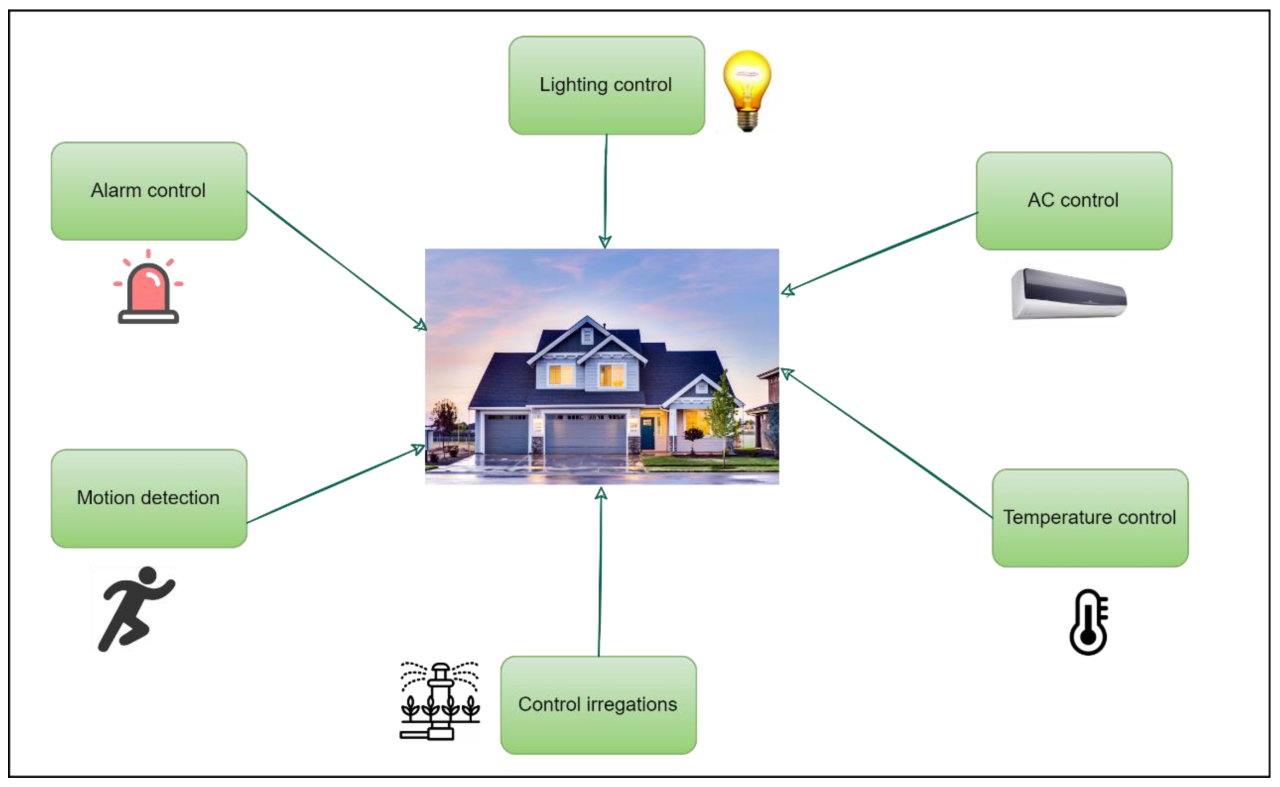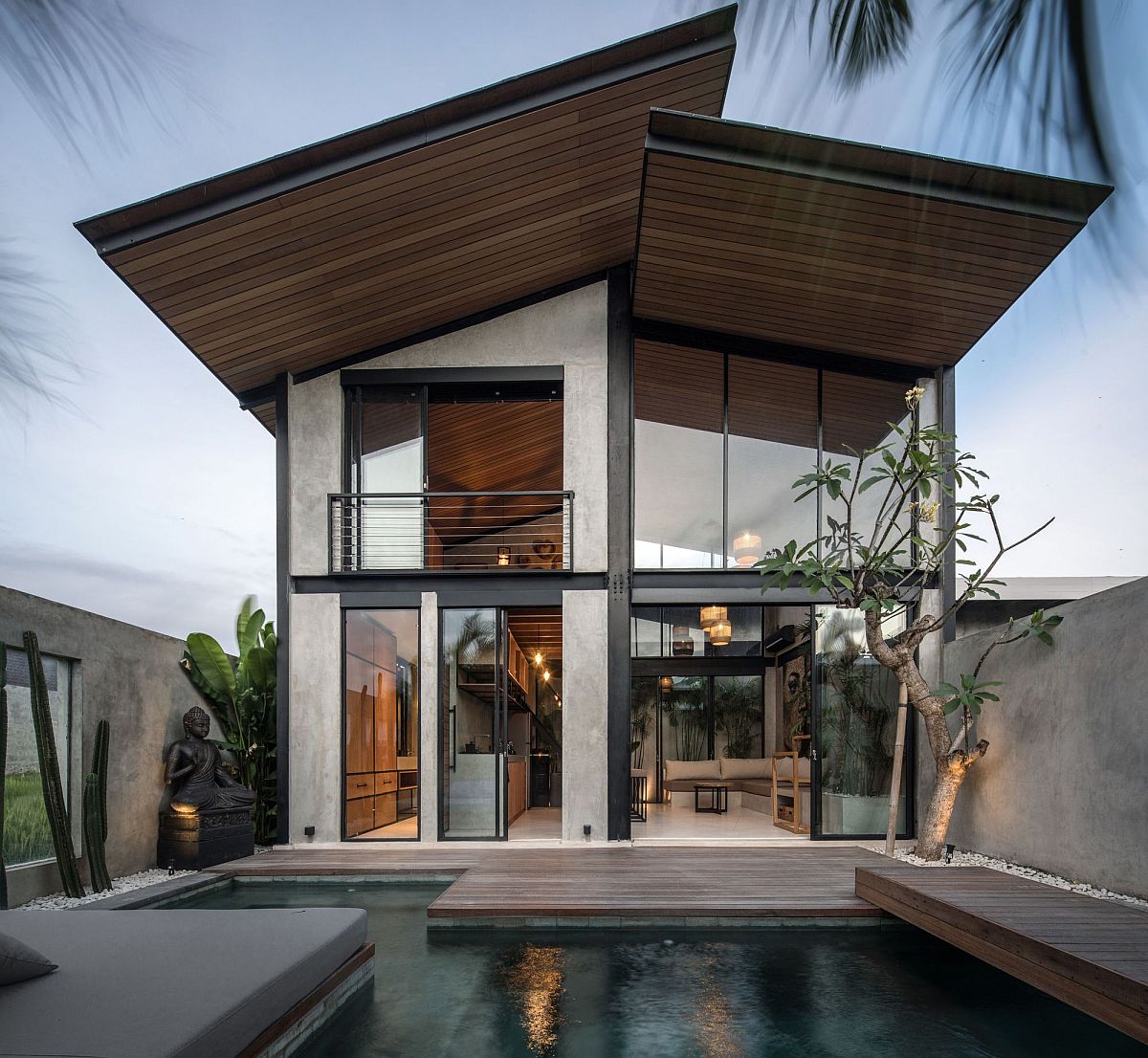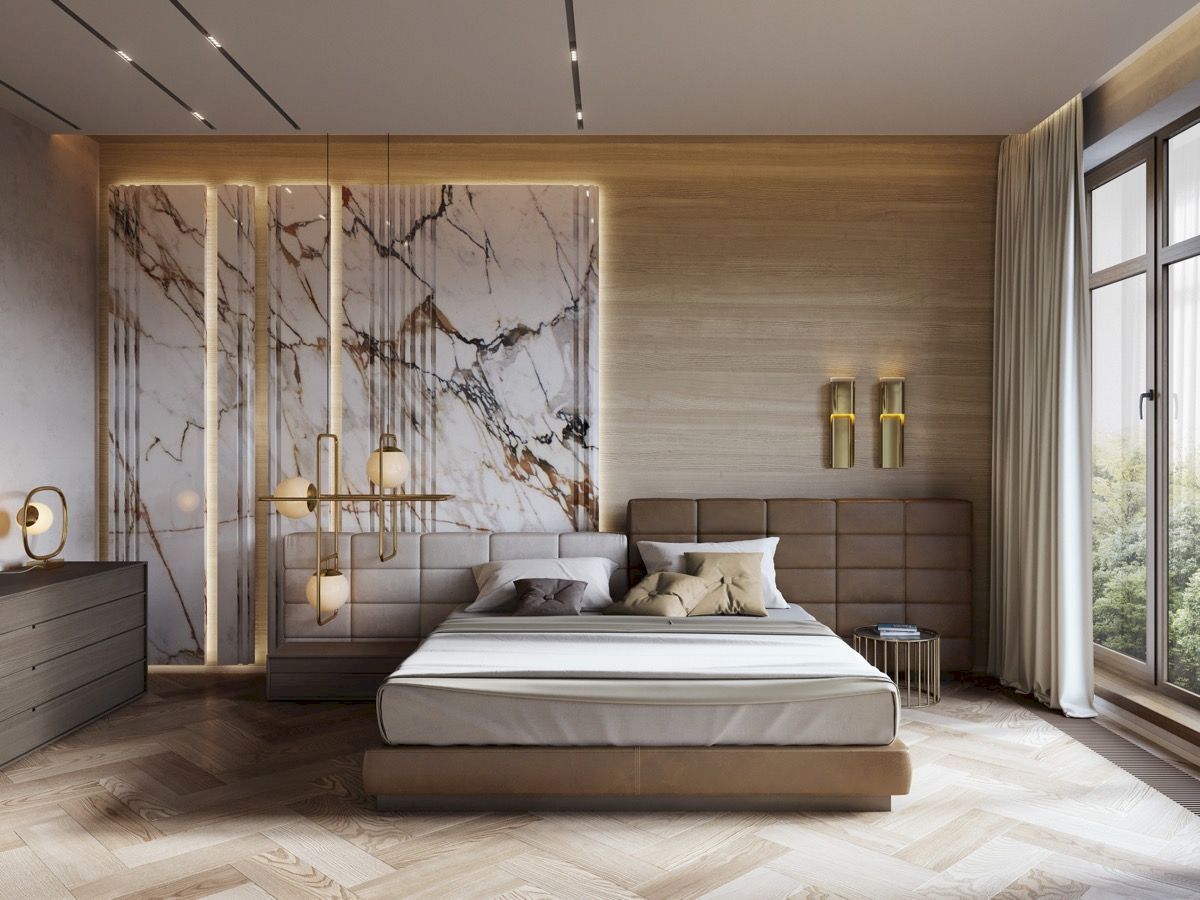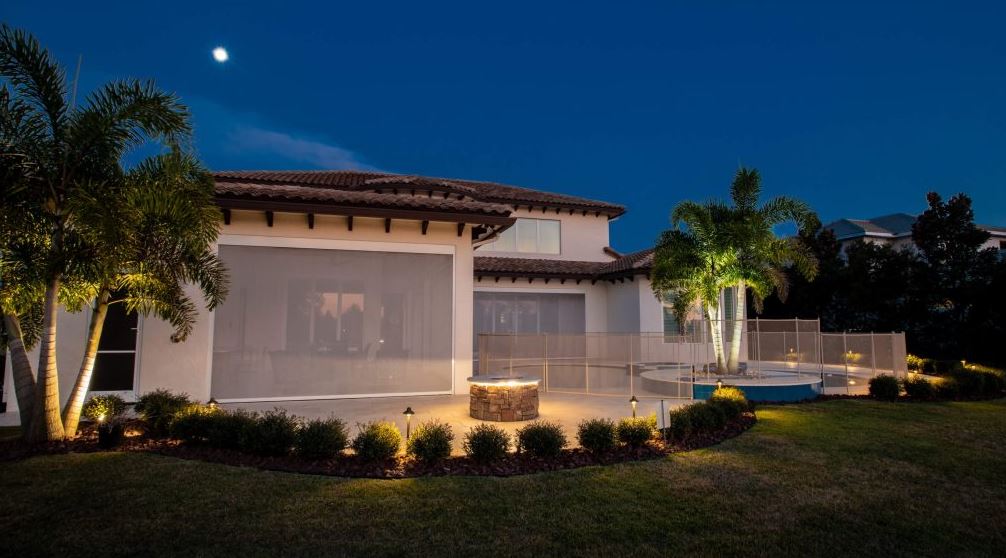Floral centerpieces are the unsung heroes of any event, from weddings to parties. They add a touch of elegance and beauty, transforming a space into something truly special. This guide dives deep into everything you need to know about creating stunning floral centerpieces, from choosing the perfect flowers to mastering the art of arrangement.
We’ll explore different styles, from rustic charm to modern minimalism, and discuss how to tailor your centerpiece designs to match specific events. Budget-friendly options and event-specific ideas are also included. Whether you’re a seasoned floral designer or just starting out, this guide has something for everyone.
Introduction to Floral Centerpieces
Floral centerpieces are decorative arrangements of flowers, foliage, and sometimes other elements like fruits, candles, or figurines, placed in the center of tables or other designated spaces. Their purpose is to enhance the aesthetic appeal of an event or gathering, creating a visually captivating focal point. They are frequently used in various settings, including weddings, parties, corporate events, and everyday home décor.
Floral centerpieces have evolved significantly over time, reflecting changing design trends and cultural influences. Early centerpieces were often simple and functional, emphasizing the natural beauty of the flowers. As time progressed, techniques and materials for floral arrangements became more elaborate and sophisticated, allowing for greater artistry and creative expression. Modern designs often prioritize minimalism, clean lines, and unique combinations of flowers and greenery, while vintage styles may incorporate antique vases and traditional flower combinations.
Styles of Floral Centerpieces
Different styles of floral centerpieces cater to diverse preferences and aesthetics. Rustic centerpieces frequently use natural elements like burlap, wood, and wildflowers, emphasizing a relaxed and organic feel. Modern centerpieces often feature clean lines, geometric shapes, and a limited color palette, showcasing a contemporary and sleek style. Vintage centerpieces evoke a sense of nostalgia and elegance, often incorporating antique vases, delicate floral arrangements, and traditional color schemes.
Role of Floral Centerpieces in Different Settings
Floral centerpieces play a crucial role in enhancing the ambiance and overall experience of various settings. In weddings, centerpieces are often a key element in setting the tone for the celebration, reflecting the couple’s style and preferences. They can also be a way to incorporate a specific theme or color palette. In parties, they add a touch of festivity and charm, creating a lively and welcoming atmosphere. Corporate events may use centerpieces to create a sophisticated and professional impression, often reflecting the company’s brand identity. Home décor can benefit from centerpieces that personalize the space and enhance the visual appeal of the room.
Trends in Floral Centerpiece Design
Trends in floral centerpiece design are influenced by current aesthetics and cultural preferences. Minimalism is a prominent trend, emphasizing clean lines and fewer elements. Emphasis on natural elements, like using local flowers or incorporating textures like wood and stone, is also growing in popularity. The use of unique and unusual flower combinations, like incorporating succulents or incorporating dried flowers, is another emerging trend. In recent years, sustainable practices, such as using locally sourced flowers and minimizing waste, have gained significant traction, adding an ethical dimension to floral design.
Examples of Floral Centerpiece Design Elements
Various elements contribute to the overall design and appeal of a floral centerpiece. Flower choices, vase selection, and the arrangement’s structure are crucial components. For example, a wedding centerpiece might incorporate a tall, elegant vase with cascading blooms in a specific color scheme, creating a visually striking display. A rustic centerpiece, on the other hand, could feature a wooden bowl with wildflowers and foliage, enhancing the natural and relaxed atmosphere. In corporate settings, centerpieces might include sophisticated arrangements in sleek, modern vases, aligning with the company’s brand image.
Types of Flowers and Arrangements
Choosing the right flowers and arranging them beautifully is key to creating stunning centerpieces. The selection process should consider the overall aesthetic, the occasion, and the available resources. Understanding different flower types and arrangement styles will greatly enhance your design capabilities.
Popular Flowers by Color and Type
A wide array of flowers can be used in centerpieces, and their selection often depends on the desired color scheme and overall look. Different flowers offer varying textures and shapes, allowing for unique and captivating arrangements.
- Reds: Roses, gerberas, and tulips are popular choices for a bold and romantic feel. Their vibrant hues create a striking focal point in any centerpiece.
- Pinks: Peonies, ranunculus, and carnations offer a softer, more delicate touch. These flowers are excellent for creating a romantic and feminine ambiance.
- Oranges and Yellows: Dahlias, sunflowers, and lilies add warmth and vibrancy to arrangements. These bright colors can elevate a centerpiece and create a cheerful atmosphere.
- Purples and Violets: Hydrangeas, lisianthus, and orchids add a touch of elegance and sophistication. Their unique shapes and colors create a memorable impression.
- Whites and Creams: Calla lilies, lilies, and freesia are excellent choices for a classic and timeless feel. Their neutral tones complement various color palettes and create a sense of purity and serenity.
Types of Floral Arrangements
The style of arrangement significantly impacts the overall look and feel of the centerpiece. Consider the desired effect when selecting the arrangement type.
- Cascading Arrangements: These arrangements feature flowers cascading down from a higher point, often using various heights and textures to create a dramatic effect. They are great for taller tables or high-profile events.
- Single Stem Arrangements: These arrangements showcase the beauty of individual flowers. They highlight the unique shape and color of each flower. They are perfect for emphasizing a specific flower variety.
- Geometric Arrangements: These arrangements use precise lines and shapes to create a structured and modern look. They utilize a structured approach and emphasize symmetry or asymmetry in a calculated manner.
Techniques for Creating Symmetrical and Asymmetrical Arrangements
The balance of the arrangement is a critical element of the final design.
- Symmetrical Arrangements: These arrangements feature identical elements on either side of a central point. This creates a formal and balanced appearance. Consider the placement of flowers and foliage to maintain balance.
- Asymmetrical Arrangements: These arrangements use elements that are different in size and shape to create a more dynamic and visually appealing composition. This approach allows for more creativity and spontaneity in design.
Choosing Flowers Based on Seasonality and Availability
Seasonal availability significantly impacts flower selection and cost.
- Seasonality: Choosing flowers that are in season reduces costs and ensures the best possible quality. Consider what flowers are readily available during the specific time of year.
- Availability: Local flower markets often offer fresh and affordable flowers that are seasonally appropriate. These options are better for budget-conscious arrangements.
Design Considerations: Floral Centerpieces
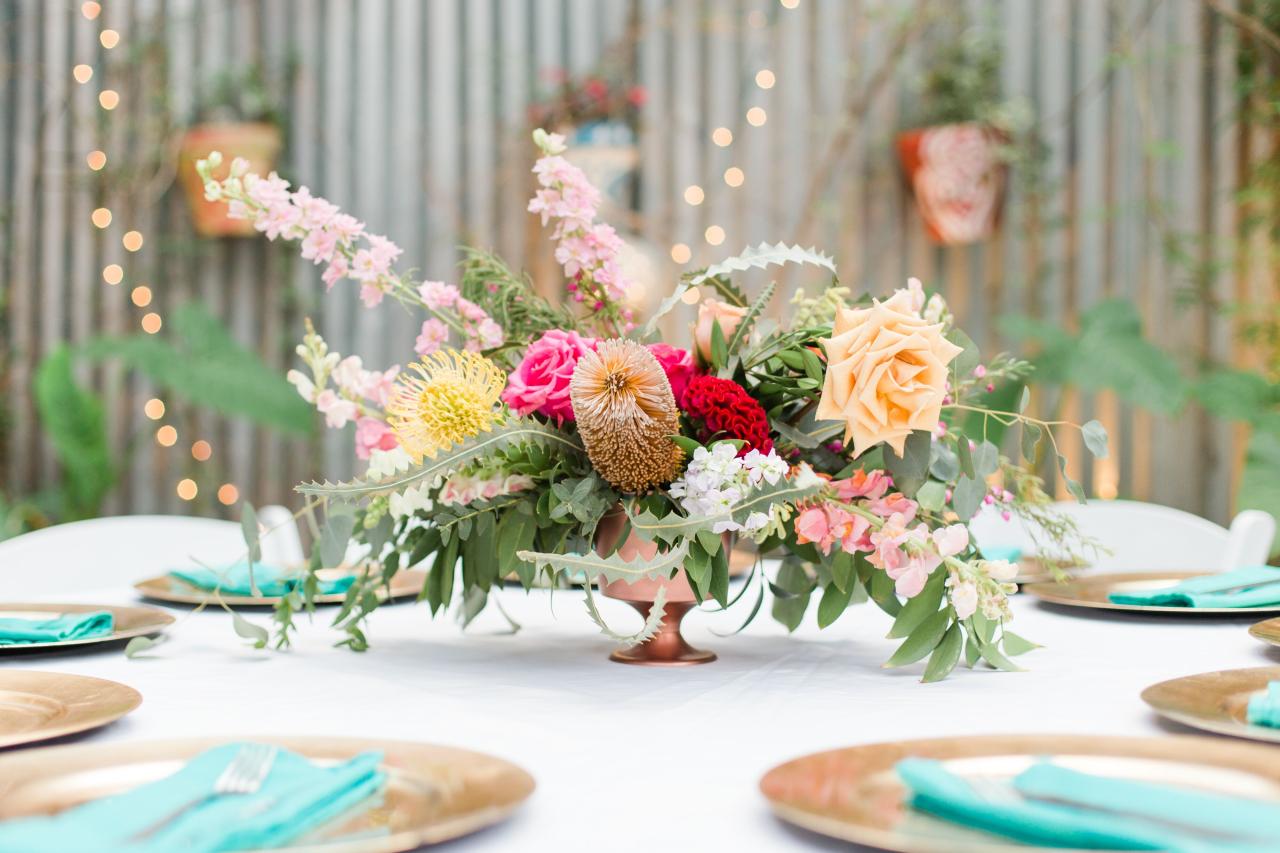
Source: xogrp.com
Floral centerpieces are a fantastic way to add a touch of elegance to any dining room, especially when aiming for a high-end look. They really elevate the ambiance of the space, and when done right, they can be a key element in creating a truly luxurious feel. For inspiration on how to incorporate them into your high-end dining room decor, check out this helpful guide on High-end dining room decor.
Ultimately, beautiful floral arrangements are a simple yet powerful way to make your dining area feel truly special.
Designing stunning floral centerpieces goes beyond simply choosing pretty flowers. It’s about carefully considering the overall aesthetic, creating a cohesive look that complements the event’s theme and the venue’s ambiance. Factors like color palettes, container choices, and the incorporation of greenery and seasonal elements all play crucial roles in achieving a captivating centerpiece.
Influencing Factors
The success of a floral centerpiece hinges on its ability to seamlessly integrate with the surrounding environment. Event themes, color palettes, and the venue’s design greatly influence the design choices. For example, a rustic wedding might benefit from wildflowers in weathered wooden containers, while a sophisticated gala could feature elegant roses in crystal vases. Understanding the event’s mood and the venue’s style is essential to creating a harmonious centerpiece.
Choosing the Right Vase or Container
Selecting the right vase or container is paramount to the overall arrangement’s success. The container should complement the flowers’ aesthetic and enhance the centerpiece’s visual appeal. Consider the size and shape of the flowers, the height of the arrangement, and the overall style. A tall, slender vase will work well with long-stemmed blooms, while a wide, shallow bowl might be better suited for a more relaxed and informal style. The container’s material, color, and texture also contribute to the overall aesthetic.
The Role of Greenery and Fillers
Greenery and fillers are not mere additions; they’re integral components that add depth, texture, and visual interest to a floral arrangement. They help to fill in gaps, balance the arrangement, and create a fuller, more visually appealing design. Using varying textures and shades of greenery creates a sense of dimension and volume. The addition of fillers, such as foliage or small branches, can help to create a more natural and organic look. Consider the size and shape of the greenery and fillers in relation to the flowers to maintain visual harmony.
Incorporating Seasonal Elements
Seasonal flowers and foliage offer an opportunity to showcase the beauty of the current season. Using locally sourced blooms and greenery is a great way to reduce your environmental impact and ensure a beautiful centerpiece that reflects the current season. Springtime might feature delicate blossoms like tulips and daffodils, while autumn could showcase warm hues of sunflowers and berries. The careful selection of seasonal elements creates a design that is not only visually appealing but also reflects the time of year. This connection with the season adds a unique touch to the centerpiece, reflecting the beauty and freshness of the current time.
Budget and Materials
Planning your floral centerpiece budget is crucial for a successful event. Knowing the approximate costs of flowers and materials helps you stay within your budget and avoid unexpected expenses. Careful planning also allows you to maximize your budget by selecting flowers that are both beautiful and affordable.
Understanding the costs of various flower types is key to crafting impressive arrangements without breaking the bank. Sourcing flowers from local growers, markets, or wholesalers can significantly impact the overall cost. Exploring cost-effective alternatives, such as using foliage and accents in place of expensive flowers, can create stunning and budget-friendly arrangements.
Comparing Flower Prices
Different flowers vary significantly in price. The availability of flowers also influences their cost. Seasonal flowers, like tulips and lilies, are often more affordable than those available year-round. Factors such as flower size, quality, and rarity can also contribute to price fluctuations. Consider the specific flower varieties you’re interested in and their typical price ranges when budgeting.
Sourcing Affordable Flowers
Local flower markets and growers often offer competitive pricing on fresh flowers. Shopping in bulk can yield significant discounts, especially for frequently used flowers in your arrangements. Look for wholesalers who offer wholesale pricing for larger orders. Alternatively, consider using flowers that are slightly less popular or out of season. These often come at lower prices while still providing a beautiful aesthetic.
Cost-Effective Arrangement Strategies
Creating impressive floral arrangements on a budget involves strategic choices. Using a mix of flowers and foliage can create a more visually appealing arrangement without spending a fortune on rare or expensive blooms. Incorporate greenery and other fillers like berries, grasses, or twigs to enhance the overall look and provide a sense of fullness. Creative arrangements can effectively use a variety of textures and heights to draw the eye and create a visually dynamic centerpiece.
Cost Analysis Table
| Flower | Approximate Cost | Availability |
|---|---|---|
| Roses | $5-$20 per dozen (depending on variety and season) | Year-round |
| Lilies | $8-$15 per stem (depending on variety and season) | Seasonal (typically spring and summer) |
| Tulips | $2-$5 per dozen (depending on variety and season) | Seasonal (typically spring) |
| Hydrangeas | $10-$20 per stem (depending on size and season) | Seasonal (typically spring and summer) |
| Carnations | $3-$8 per dozen | Year-round |
Note: Prices are approximate and can vary based on factors such as location, quality, and demand.
Floral centerpieces can be so much more than just pretty arrangements. For a truly modern touch, consider incorporating elements of Scandinavian minimalist elegance. Think simple, clean lines, natural materials, and a focus on fewer, carefully chosen blooms. This approach, as seen in Scandinavian minimalist elegance , really elevates the look of your floral centerpiece, making it a focal point that’s both beautiful and understated.
Event-Specific Centerpieces
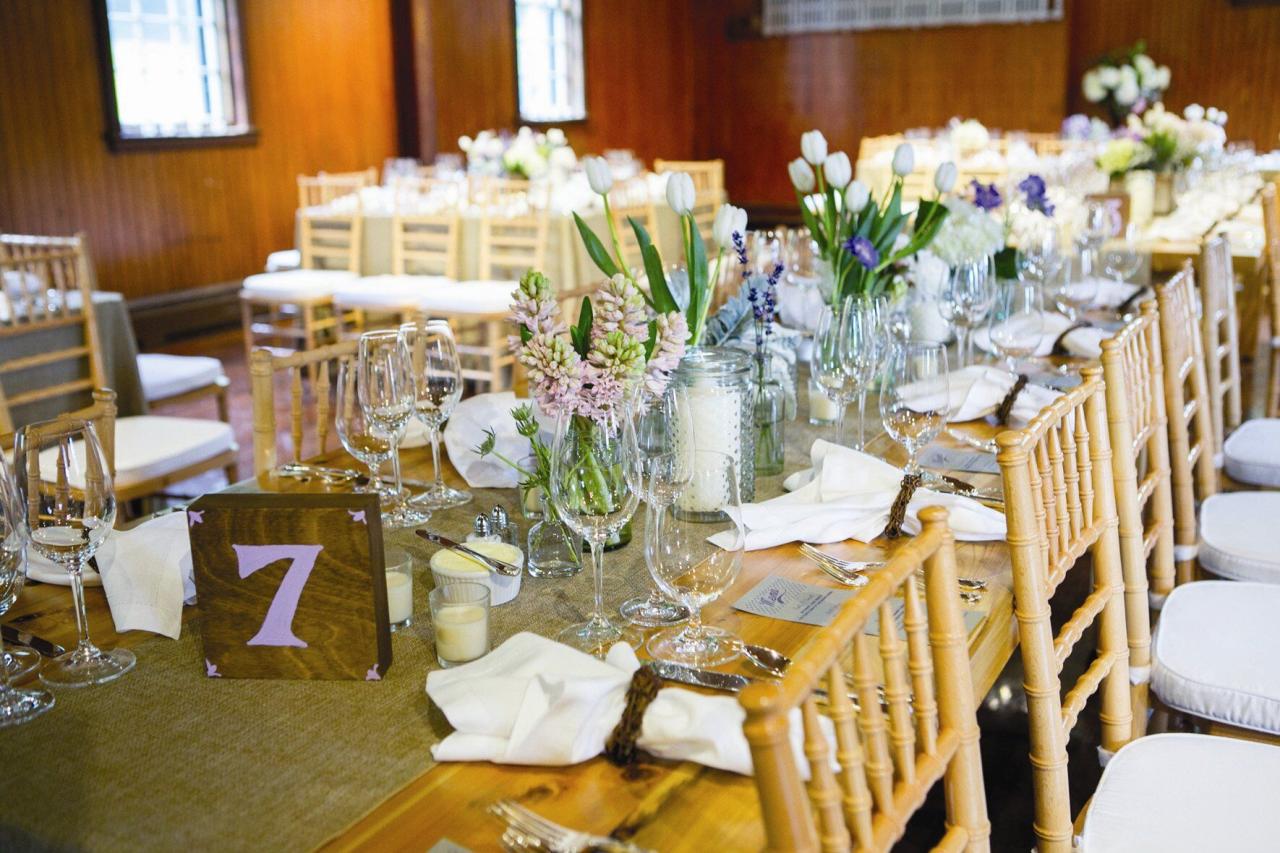
Source: xogrp.com
Floral centerpieces are a beautiful way to add a touch of nature to any space. They can really elevate a room’s ambiance, but sometimes you want something a bit more sophisticated, like fine art wall decor. For a truly unique and artistic feel, consider incorporating some stunning pieces from Fine art wall decor to complement your floral centerpieces and create a cohesive aesthetic.
Ultimately, the goal is to bring a harmonious and visually engaging atmosphere to your space, and floral centerpieces are a fantastic way to achieve this.
Floral centerpieces can significantly enhance the ambiance of any event, from weddings to birthdays and corporate gatherings. Careful consideration of the event’s theme and desired atmosphere is crucial in selecting appropriate floral arrangements. Different events call for unique design choices to create the desired mood.
Choosing the right flowers and arrangement styles for specific events allows for a more personalized and impactful visual experience for attendees. Understanding the desired atmosphere of each event helps create the perfect floral setting.
Wedding Centerpieces
Wedding centerpieces play a pivotal role in setting the romantic tone for the occasion. The style of the wedding dictates the floral design.
- Rustic Elegance: This style often features natural elements like burlap, mason jars, and wildflowers, combined with classic blooms like roses, peonies, and hydrangeas. Cream, blush, and burgundy tones are popular choices for creating a warm and inviting atmosphere.
- Modern Chic: Modern wedding centerpieces tend to be minimalist and elegant, often using sleek vases and geometric shapes. Flowers like orchids, calla lilies, and eucalyptus in neutral tones like ivory, white, or silver are frequently chosen. The arrangements are clean-lined and focused on creating a sophisticated and stylish ambiance.
- Bohemian Rhapsody: A bohemian-style wedding is characterized by a free-flowing and artistic feel. These arrangements often feature wildflowers, dried flowers, and varying heights of greenery. Colors might include a mix of earthy tones and brighter accents to create a relaxed and whimsical atmosphere.
Corporate Centerpieces
Corporate events often require centerpieces that reflect professionalism and sophistication. The floral arrangements should be appropriate for the specific event theme.
| Event | Centerpiece Theme | Colors | Flowers |
|---|---|---|---|
| Wedding | Rustic Elegance | Cream, blush, burgundy | Roses, peonies, hydrangeas |
| Corporate | Modern Minimalism | Silver, gold, black | Calla lilies, orchids, eucalyptus |
| Corporate | Sophisticated Elegance | Deep purples, rich greens | Hydrangeas, lilies, orchids |
| Corporate | Vibrant Energy | Red, orange, yellow | Gerberas, sunflowers, roses |
The table above presents examples of floral centerpiece ideas for corporate events, highlighting different themes and color palettes.
Birthday Centerpieces
Birthday centerpieces should reflect the birthday celebrant’s personality and the desired party atmosphere. Vibrant colors and cheerful styles are key elements for creating a joyful ambiance.
- Colorful Celebration: For a lively birthday party, use a mix of bright and bold flowers like sunflowers, gerberas, and tulips. Vases in fun shapes and colors complement the theme.
- Themed Festivities: If the birthday has a specific theme (e.g., a superhero party), the flowers can be chosen to match the theme. For example, red and blue flowers for a superhero theme.
Anniversary Centerpieces
Anniversary centerpieces should convey a sense of romance and timelessness. The arrangement should reflect the enduring love between the couple.
- Romantic Roses: Roses, in various shades, are a classic choice for anniversary centerpieces, symbolizing enduring love. A simple arrangement in a classic vase can be very effective.
- Timeless Elegance: A timeless and sophisticated arrangement can be created using elegant blooms and greenery in muted tones, such as cream, ivory, or blush. This style emphasizes elegance and sophistication, suitable for celebrating years of togetherness.
Maintenance and Longevity
Keeping floral centerpieces fresh and vibrant for extended periods requires careful attention to detail. Proper maintenance and techniques for extending the life of cut flowers can significantly impact the overall aesthetic and enjoyment of your arrangement. By understanding the factors that contribute to wilting and discoloration, you can create arrangements that last longer and impress your guests.
Maintaining the freshness of floral centerpieces hinges on several crucial factors. These range from the initial preparation of the flowers to the subsequent care and arrangement within the centerpiece. Understanding these key elements is vital for maximizing the longevity of your floral creations.
Preparing the Flowers
Proper preparation of the flowers is crucial to their longevity. This involves careful selection and immediate handling after purchase. The quality of the flowers you choose directly impacts their lifespan.
- Select flowers that are in peak condition. Avoid flowers that are already wilting or showing signs of damage.
- Immediately trim the stems of flowers upon arrival. Use sharp, clean scissors or pruning shears to make a diagonal cut. This exposes fresh, clean surfaces for water absorption.
- Removing foliage below the water line prevents bacterial growth and keeps the water clean. This is important for extending the life of the flowers and preventing early wilting.
Maintaining Freshness
Regularly changing the water in the vases or containers is essential for preventing the growth of bacteria and keeping the flowers hydrated.
- Change the water every 1-2 days, depending on the type of flowers and the environment. The frequency might need to be adjusted based on the specific flowers and their environment. For example, warmer temperatures will require more frequent water changes.
- Add a floral preservative solution to the water. This solution helps to maintain the pH balance of the water and inhibit bacterial growth, extending the life of the flowers.
- Cut the stems again every 2-3 days to maintain fresh, clean surfaces for water absorption.
- Avoid placing flowers in direct sunlight or near heat sources. Heat accelerates the wilting process, and prolonged exposure to direct sunlight can also affect the longevity of the flowers.
Arrangement Techniques
The arrangement of flowers plays a significant role in their lifespan. A well-structured arrangement can promote optimal hydration and minimize the stress on the flowers.
- Group flowers with similar water needs together to maintain a consistent moisture level. Some flowers require more water than others, so grouping accordingly can help maintain their hydration and prevent wilting.
- Place flowers in a vase or container that is appropriate for their size and number. Overcrowding can cause stress and reduce the lifespan of the flowers. Consider the size of the flowers and the vase or container to avoid overcrowding.
- Use floral foam (oasis) for arranging flowers. This can hold the flowers upright and provide them with consistent hydration, increasing their longevity. Using floral foam can enhance the support and hydration of flowers, helping to prevent them from wilting prematurely.
Preventing Wilting and Discoloration
Various factors contribute to wilting and discoloration in cut flowers. Understanding these factors helps in creating arrangements that retain their vibrancy.
- Avoid placing flowers in drafty areas or near air vents, as these can accelerate the drying out process.
- Keep flowers away from fruit, as ethylene gas emitted by fruit can hasten the aging process of flowers.
- Keep the flowers in a cool, well-ventilated area to slow down the rate of dehydration.
Visual Inspiration
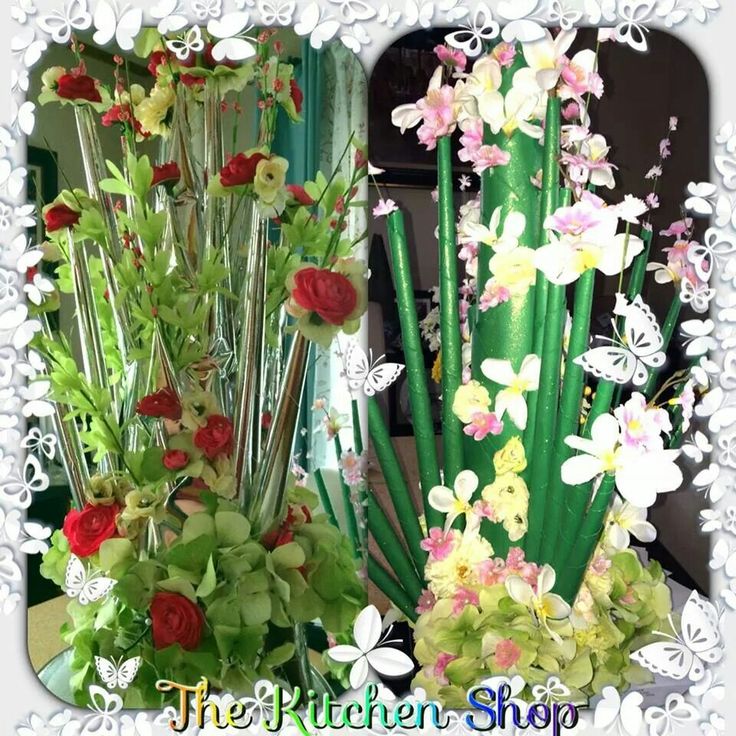
Source: pinimg.com
Floral centerpieces are a great way to add a touch of elegance to any dining space. For a Spanish colonial dining design, think intricate, detailed arrangements using local flowers and foliage, like those often found in Spanish colonial dining design. They’ll perfectly complement the warm, rich colors and textures of the space, creating a beautiful and authentic atmosphere.
Looking for inspiration to create stunning floral centerpieces? Visual inspiration is key to bringing your vision to life. Understanding different styles and arrangements can spark creativity and help you select the perfect look for your event.
Choosing the right visual style is crucial for a cohesive and impactful design. From rustic charm to modern elegance, various aesthetics can set the tone for your event. By exploring different designs and color palettes, you can tailor the centerpieces to match the overall theme and create a memorable experience for your guests.
Floral Centerpiece Designs
Different floral centerpiece designs cater to diverse tastes and event styles. The table below showcases a few popular styles, highlighting their characteristics and elements.
| Design | Color Palette | Flower Types | Description |
|---|---|---|---|
| Rustic Bouquet | Earthy tones (browns, creams, greens, terracotta) | Wildflowers, ferns, grasses, dried flowers | This design evokes a bohemian and natural ambiance. The use of natural elements like dried flowers and grasses creates a warm and inviting atmosphere. |
| Modern Geometric | Bold colors (reds, purples, blues, golds) | Lilies, orchids, eucalyptus, alstroemeria | This design emphasizes clean lines and geometric shapes. Strong colors and modern flower choices create a striking and contemporary look. |
| Whimsical Wonderland | Pastel colors (pinks, lavenders, yellows) | Peonies, roses, hydrangeas, tulips | This style is perfect for a celebration with a touch of magic. The pastel color palette and variety of delicate flowers create a lighthearted and enchanting feel. |
| Elegant Cascade | Soft neutrals (ivory, cream, blush) | Roses, lilies, hydrangeas, peonies | This arrangement features a graceful waterfall of flowers cascading down from a tall vase or container. The soft color palette creates a sophisticated and romantic ambiance. |
Visual Guide to Floral Arrangements
To visualize the possibilities, consider the following arrangement examples. These arrangements showcase different heights, shapes, and focal points, offering various options to enhance your centerpiece design.
- A low, wide arrangement using wildflowers and grasses can be ideal for a rustic or bohemian-style wedding. This type of arrangement is visually appealing and can easily be scaled up or down to fit various tables.
- A tall, slender arrangement featuring lilies and orchids can create a striking centerpiece for a modern or contemporary event. The height and elegance of these flowers can command attention and enhance the sophistication of the overall design.
- A mixed arrangement combining different heights and textures, using roses, hydrangeas, and greenery, can create a visually interesting and engaging centerpiece for a celebration. This approach provides a blend of elegance and visual appeal.
Romantic and Elegant Centerpiece, Floral centerpieces
A romantic and elegant centerpiece often emphasizes a sophisticated color palette and carefully chosen flowers. It focuses on creating a visually appealing and delicate arrangement.
For a truly romantic and elegant feel, consider a centerpiece featuring a clear glass vase filled with a cascading arrangement of white roses and ivory lilies. Add accents of eucalyptus or greenery for a touch of nature. The overall effect should be soft, delicate, and visually inviting. Soft lighting can enhance the romantic ambiance and draw attention to the intricate details of the arrangement. The color palette should be harmonious and complement the overall event design. Consider using a single, strong focal point, such as a striking piece of glassware, to enhance the elegance of the centerpiece. The use of candles can add a touch of warmth and intimacy to the scene, creating a truly memorable and romantic atmosphere.
Outcome Summary
In conclusion, creating beautiful floral centerpieces involves careful consideration of style, budget, and the event itself. By understanding the various flower types, arrangement styles, and design considerations, you can elevate any occasion with stunning centerpieces. Remember to prioritize your personal style, and don’t be afraid to experiment with different combinations to achieve the perfect look for your event. From weddings to birthdays, this comprehensive guide empowers you to craft unforgettable centerpieces that leave a lasting impression.
Key Questions Answered
What are some cost-effective ways to source flowers for centerpieces?
Look for seasonal flowers, which are often more affordable. Consider buying flowers in bulk or from local farmers’ markets. You can also use foliage and greenery to add visual interest without breaking the bank.
What are some tips for maintaining the freshness of cut flowers?
Change the water regularly, use flower food, and trim the stems at a slight angle before placing them in the vase. Keep the arrangements away from direct sunlight and heat sources.
How can I choose the right vase or container for a floral arrangement?
Consider the overall style of your event and the size of the arrangement. Choose a vase that complements the flowers and the space where it will be displayed.
What are some popular flowers used in centerpieces, categorized by color?
Many flowers are popular for centerpieces, but some common choices include roses (red, white, pink), lilies (various colors), tulips (various colors), and hydrangeas (various colors). The best choice depends on the color scheme and overall theme of your event.
- High-performance glass A detailed look - June 2, 2025
- Coastal Modern House A Guide - May 6, 2025
- Floral Centerpieces A Complete Guide - April 20, 2025

